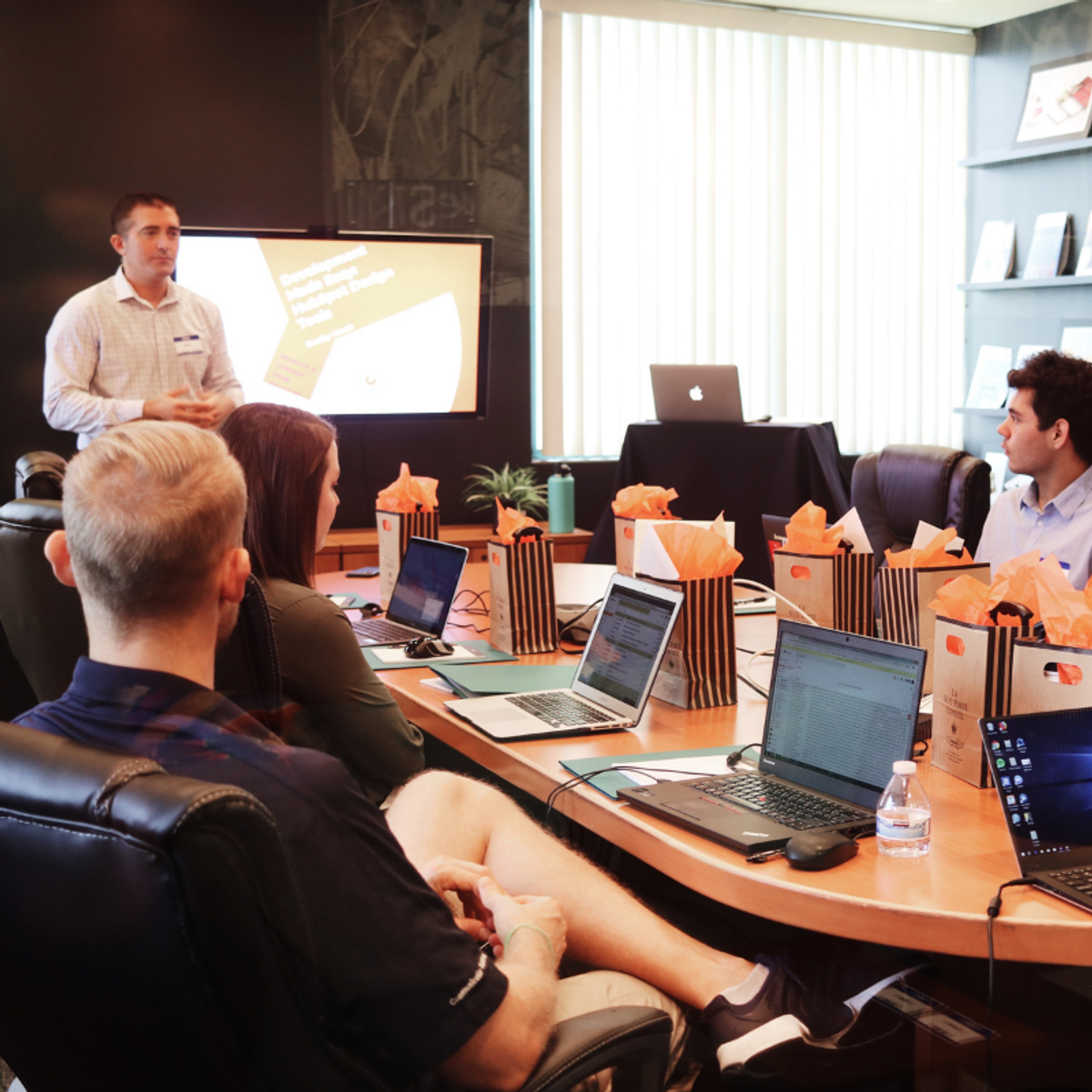Back to Courses









Leadership And Management Courses - Page 50
Showing results 491-500 of 600

Create a Project Management Tracker using Microsoft Excel
As a small business owner, budgets are often tight for the "extras." Often times, this means that some of those high-value marketing tools cannot be offered. Small business owners should turn to free or low-cost alternatives. An easy-to-use and manageable alternative is a free online version of Microsoft Excel from Microsoft Office 365. In this project, you will learn how to create a simple project management tracking sheet.
At the end of this project, you will have the Excel project management tracking template for the next presentation of your development project.

New Product Development - develop your own new product
New product development is essential for the survival of many companies in the Hi-Tec sector, as well as other sectors.
The percentage of sales of successful business organizations tied to the successful Introduction of new products and services is high. However, the failure rate of new products development projects is also high and therefore there is a need for a methodology based on a well-designed process as well as tools and techniques to manage New Product Development (NPD) projects. Since most companies develop new products, it is important to you as a manager to be familiar and understand the basic concepts and terminology of NPD projects.
This course will give you holistic view of the new product development arena and will help you gain specific knowledge in how to select, plan, monitor and control a new product development project, using the proper tools and techniques.
Upon completion of this MOOC, you will:
1. have a clear view and understanding of the New Product Development (NPD) arena
2. be able to select the right product configuration based on value (Voice of the customer), cost, time to market and risks.
3. be able to develop a feasible plan for your own product.
4. be able to execute your plan in an uncertain dynamic environment using the right tools and techniques.
As part of the course the learners are required to purchase a discounted license for the Product Team Builder Simulator (http://www.sandboxmodel.com/), which is used for training and assignment submission. Please notice the simulator can only be used with Internet Explorer from a Windows computer.

Expand Employee Interaction with Canvas
By the end of this project, you will be able to develop an esthetically appealing course with a variety of interactive tools within the Canvas LMS. You will also be able to organize your learners into collaborative groups that promote employee interaction which will increase the overall team building and connection amongst peers.
Note: This course works best for learners who are based in the North America region. We’re currently working on providing the same experience in other regions.

Esports Teams and Professional Players
This course will be focusing on the competitive Esport team and individual professional players. Whether you are playing on a team or competing as an individual, you will find that being a professional Esports player is more complex and nuanced than most people realize. We will be talking a lot about the support staff surrounding players, the intricacy of navigating contracts, and the hardships of committing yourself to professional play.
We will also be talking about the Esports media. Similar to sports, Esports has developed its own unique ecosystem of articles, videos, streaming, social media, and overall content creation. We will examine the specifics of different types of media and explain how each has its uses in making Esports more popular as a whole.

Leadership in the Family Business
To ensure that the family business transcends and the company is sustained over time, in this course of entrepreneurship and business administration, you will have the opportunity to understand the complexity of family and business dynamics, reflect on the roles and ways of thinking of the family's leader and make a diagnosis of entrepreneurship.
All this in order for you to know the instruments and components that involve leading and orchestrating the family business: the future vision of the business family, the development of the next generations and the formation of an effective and flexible family and business government. All the knowledge acquired in this course of business administration can be applied in the family business.
The Center for Entrepreneurial Families and EGADE Business School of Tecnologico de Monterrey is the ideal institution to develop these skills, since Tec de Monterrey is #1 university in Mexico and the 6th best in Latin America according to Times Higher Education (THE) 2016.
Professors from the Entrepreneurial Families Center are highly qualified and recognized as part of the worldwide STEP project for family entrepreneurship, moreover, EGADE Business School is number 1 school in Latin America, in its MBA, according to the ranking of America Economia.

Platform Thinking: exploiting data through platforms
(Digital) data are often considered the new oil. Companies often exploit them building platforms, involving different sets of users that generate data – for example, enjoying a digital service through a mobile app – and other organizations that see value in those data and wish to leverage them. This module of the “Platform Thinking” series aims to assess the role of data in digital platforms. We are talking about companies – like social networks – that exploit data to offer personalized advertising or personalized experiences – in services like Netflix or Spotify – but even companies that offer data to external partners for other purposes, like fitness apps that share data with pharmaceutical companies or other health companies. This is a widely intriguing but also a slippery topic, given the amount of data-related scandals we lived over the last few years. Therefore, this course aims to assess the strategies and tactics to exploit data through platforms, highlighting the opportunities and challenges of creating and managing data-driven opportunities. In doing so, we will consider the ethical and policy implications – and related opportunities – to have a transparent and trustable relationship with the end-users. Finally, we will position the data within the platform thinking process.

Engineering Project Management: Scope, Time and Cost Management
Scope, time, and cost management are at the heart of successful project management. This course will give you the tools to develop a project scope, schedule and budget and then status them to predict project performance. Throughout the course, you will learn about change management and techniques to implement it.
By the end of this course you will be able to:
• Create a requirements document
• Create a Project Scope Statement
• Identify ways to control the scope of the project
• Decompose the work and develop work packages
• Create a Work Breakdown Structure
• Develop a Critical Path Schedule
• Review types of cost estimates and identify whether they are “top down or bottom up”
• Review budgets, contingencies and reserves
• Calculate planned and earned values to compare with actual cost
• Perform a cost and schedule analysis
Each week you will prepare a key deliverable for the project plan based on a provided Case Study. These deliverables include:
• Project Scope Statement
• Project Work Breakdown Structure (WBS) and WBS dictionary
• Critical Path schedule sequence diagram
• Bar Chart Schedule (Gantt Chart)
• Project Cost Estimate
• Project Status using an Earned Value Calculation
All of this will position you to set up a plan to control your next assignment or your next project whether this is as the project manager or as an area leader.
Rice Center for Engineering Leadership is a Registered Education Provider through the Project Management Institute (PMI)®. Learners who complete this course on the Certificate track will be awarded 14 hours of Profession Development Units. These are recognized by PMI for continuing education or can be applied toward the 35 hours of education required for the Project Management Professional (PMP)® certification.
PMI and PMP are registered marks of the Project Management Institute, Inc.

International Leadership and Organizational Behavior
Leaders in business and non-profit organizations increasingly work across national borders and in multi-cultural environments. You may work regularly with customers or suppliers abroad, or be part of a globally dispersed cross-functional team, or an expatriate manager on an international assignment. You may be a member of a global online community, or a development aid worker collaborating with an international network of partner organizations. In all of these contexts, your effectiveness as a leader depends on how well you understand and are able to manage individual and collective behaviors in an intercultural context.
In this course – together with a team of Bocconi expert faculty and Bocconi alumni – we’ll explore the theory and practice of international and intercultural leadership and organizational behavior. Social science research has revealed systematic ways in which our behavior differs across cultural contexts – enabling us to more effectively work across borders. Insights from psychology, neuroscience, sociology and anthropology, from communication studies and from management scholarship allow us to understand what shapes individual and group decision making, what enhances or weakens team performance, and how we can build and use our social networks. And the shared practical experience of international leaders allows us to identify concrete steps to enhancing intercultural leadership competence, and to be cognizant of common leadership challenges.
Learning about organizational behavior provides a great opportunity to develop your leadership skills and to reflect on your own behavioral tendencies. How do you usually make important decisions? What motivates you and how do you try motivating others? How successfully do you leverage and integrate diverse skills and views in a team? Do you prefer professional relationships with a close-knit group of trusted colleagues, or with a far-flung network of acquaintances from all walks of life?
If you really want to learn how organizations behave and take decisions and at the same time develop leadership skills, then this is the course for you.
We are looking forward to welcoming you and supporting you on this journey of learning and discovery.
COURSE SYLLABUS
Week 1 - Leadership Acumen. International perspective on leadership, common traps & challenges, and opportunities of intercultural leadership.
Week 2 - Navigating Culture. Impact of cultural differences on organizations, decoding culture, culture classifications and stereotyping, developing intercultural intelligence.
Week 3 - Communication. Communication and its impact on leadership identity and relationships, managing communication to improve decision making, steps for developing your intercultural communication skills.
Week 4 - Motivation. Views on individual motivation, cultural differences in motivation, developing motivation and commitment in teams.
Week 5 - Networking. Patterns of interpersonal relationships in/across organizations, strategically developing social networks and social capital, norms for networking across cultures.
Week 6 - Conflict. Effective / defective conflict management approaches, dealing with ethical dilemmas.
Thanks to the participation of our alumni and of the Bocconi Alumni Association, participants will have practical insights on international leadership.
RECOMMENDED BACKGROUND
All are welcome! Some prior exposure to basic issues of organizational behavior (communication, decision making, motivation, etc.) is useful, but not required.
Organizational Analysis
In this introductory, self-paced course, you will learn multiple theories of organizational behavior and apply them to actual cases of organizational change.
Organizations are groups whose members coordinate their behaviors in order to accomplish a shared goal. They can be found nearly everywhere in today’s society: universities, start-ups, classrooms, hospitals, non-profits, government bureaus, corporations, restaurants, grocery stores, and professional associations are some of many examples of organizations.
Organizations are as varied and complex as they are ubiquitous: they differ in size and internal structure; they can entail a multiplicity of goals and tasks (some of which are planned and others unplanned!); they are made up of individuals whose goals and motivations may differ from those of the group; and they must interact with other organizations and deal with environmental constraints in order to be successful. This complexity frequently results in a myriad of problems for organizational participants and the organization’s survival.
In this course, we will use organizational theories to systematically analyze how an organization operates and can best be managed. Organizational theories highlight certain features of an organization’s structure and environment, as well as its processes of negotiation, production, and change. Each provides a lens for interpreting novel organizational situations and developing a sense for how individual and group behaviors are organized. Theories are valuable for the analyst and manager because most organizational problems are unique to the circumstances and cannot be solved by simple rules of thumb. Armed with a toolset of organizational theories, you will be able to systematically identify important features of an organization and the events transforming it; choose a theoretical framework most applicable to the observed mode of organizing; and use that theory to determine which actions will best redirect the organization in desired directions.
In sum, the course has three goals: to become familiar with a series of real-world organizational phenomena; to learn different theoretical perspectives that can elucidate these phenomena; and to apply these different ways of “seeing” and managing organizations to cases. In such a fashion, the course is designed to actively bridge theory and practice, exposing students to a variety of conceptual tools and ways to negotiate novel situations.

Urgent Optimism: How to Turn Foresight into Action
When you get better at thinking about the future, you get better at changing the future.
This course will help you take all of the foresight skills you’ve developed so far and apply them to making real positive change in your life, in your work, and in the world around you.
You’ll learn how to create and share “preferred futures”, which are highly persuasive, compelling visions of the changes you want to make real. You’ll use your preferred future to identify obstacles, recruit allies, collect resources, and plan action to make your vision real.
You’ll also practice making “artifacts” from the future, which are creative representations of how everyday life might be different in the future. Artifacts can inspire others to join you in your quest to make a preferred future real. Leading futurists from the Institute for the Future will share with you their favorite future artifacts – and walk you through the entire creative process it took to make them.
Every action we take today changes the future. This course will help you identify and take the actions that make the BIGGEST, most strategic impacts on the most urgent challenges you and society face.
Many thanks to the Enlight Foundation and the Enlight Collaborative, which provided a grant to support the creation of this course.
Popular Internships and Jobs by Categories
Browse
© 2024 BoostGrad | All rights reserved


